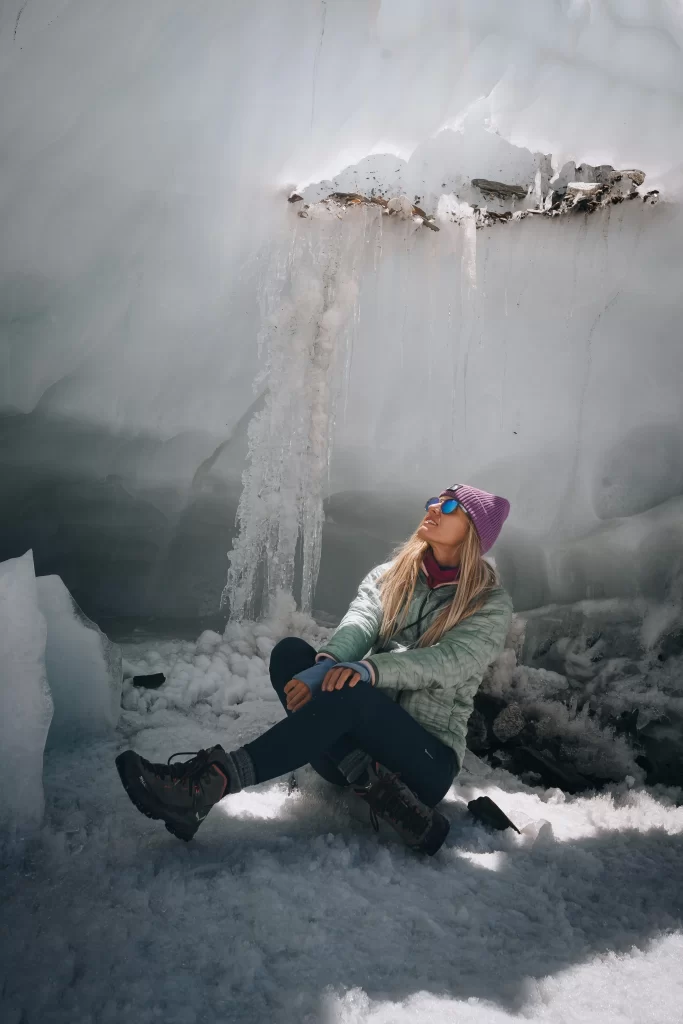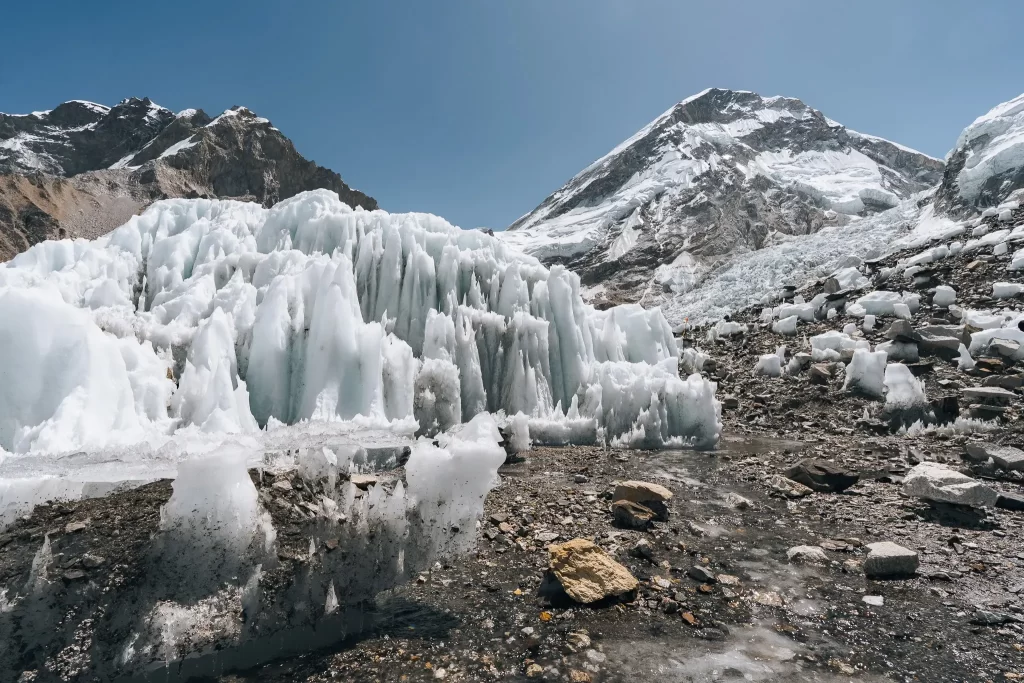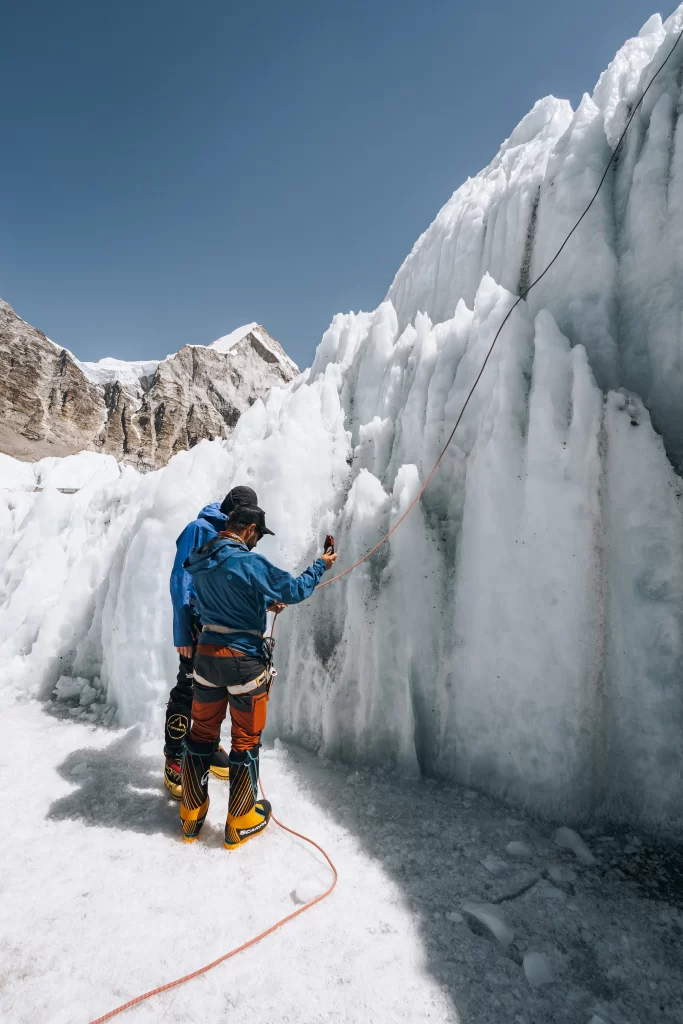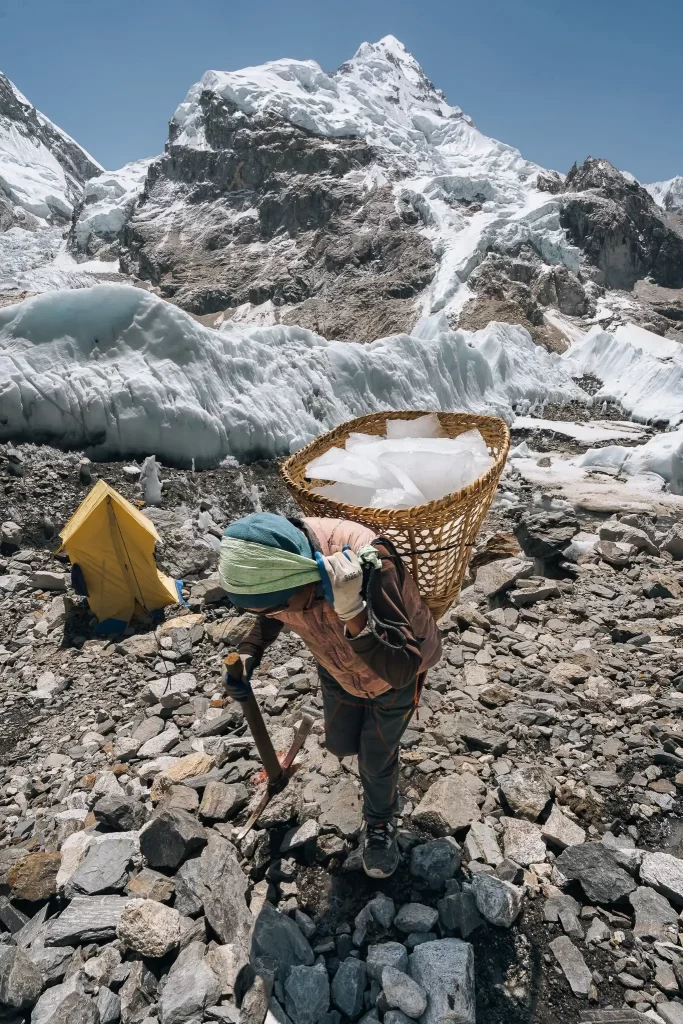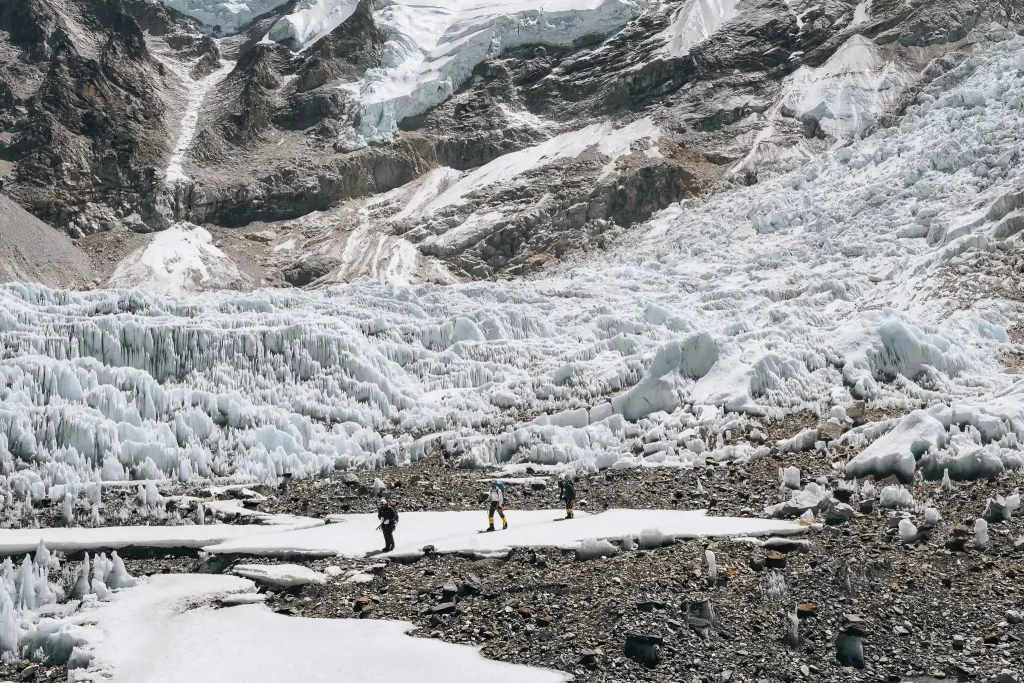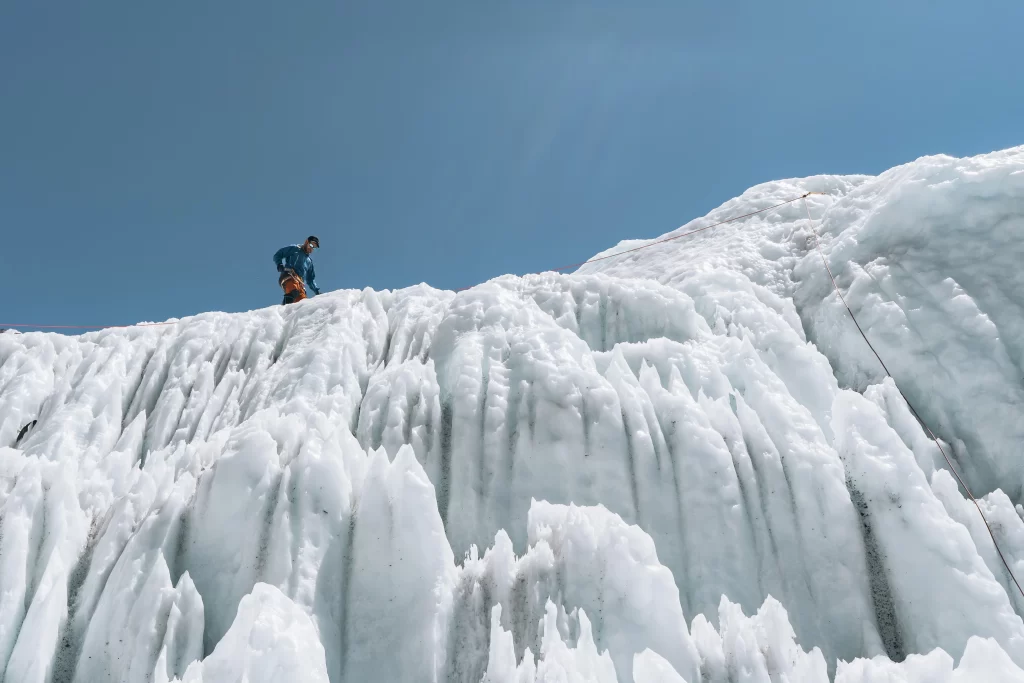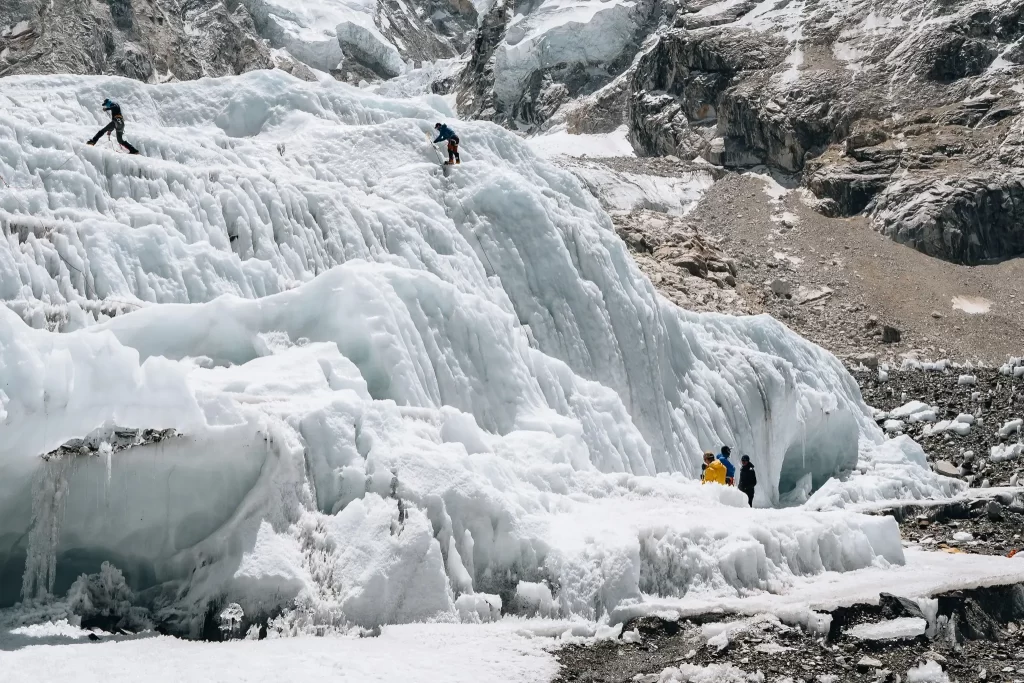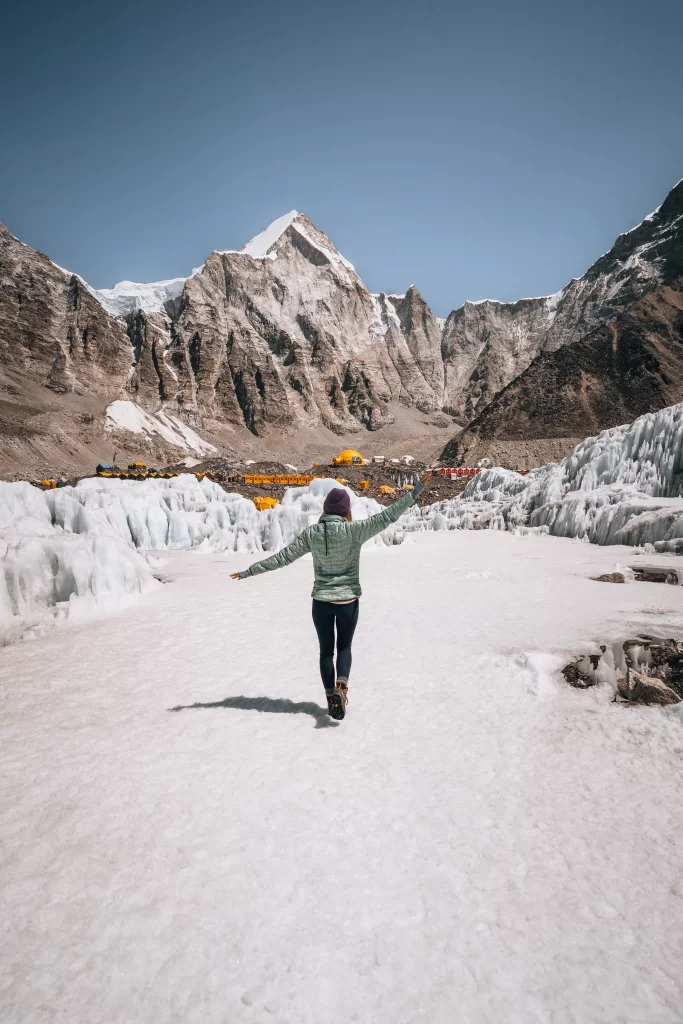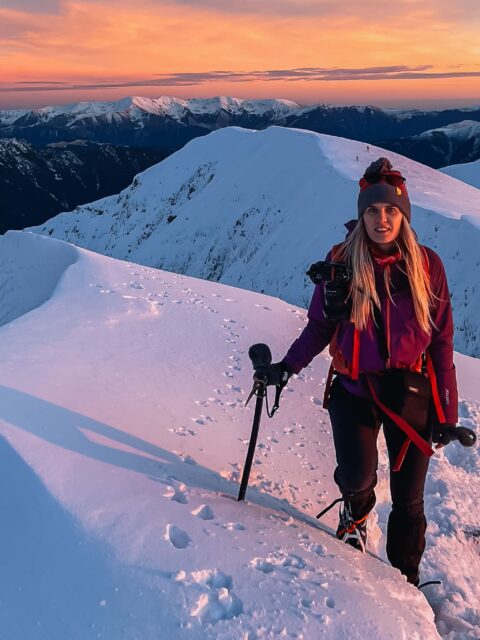Introduction: The Journey to Everest Base Camp
So there I was, late April, early May, trekking through the Himalayas with a group organized by Alina, a worldwide tour guide who seriously knows how to curate adventure. The weather? It was so perfect it felt like nature’s own Instagram filter. My sense of adventure? Bigger than Everest itself (and that’s saying something!). After 10 days of hiking and coughing like I was auditioning for a seal choir, I was finally closing in on Everest Base Camp (EBC).
When I saw the iconic Everest Base Camp sign, every ounce of exhaustion vanished quicker than instant coffee at high altitude. I was actually here—standing where legends begin their ascent to the top of the world! Cue the dramatic background music.

Massive Camp, Cake, and Climbers: A Warm Welcome
Now, if you think of Everest Base Camp as a cozy little campsite, think again. This place is HUGE. It took us nearly an hour just to find our tents, and I felt like a lost tourist at a mountaintop festival—minus the food trucks. The locals? Hardcore climbers, casually prepping for their Everest summit bids.
But wait for it… upon arrival, we were greeted with cake! Yes, cake at 5,364 meters. After days of living on noodles and granola bars, this cake tasted like it was baked by angels. As I sat there stuffing my face, I couldn’t help but feel like a tiny dot in this grand mountain universe. Meanwhile, the seasoned climbers were tucked away, probably dreaming of summiting Everest, and I was over here, counting my layers of socks like I was prepping for a North Pole expedition. One day, I’ll be as adventurous as them. Maybe.

What to Expect at Everest Base Camp (Spoiler: It’s Awesome!)
- Acommodation: Imagine settling down for the night with the towering peaks of Everest and its neighbors standing guard. Our temporary homes, courtesy of 8K Expeditions, felt like cozy sanctuaries amidst the vastness of the Himalayas. Who needs walls when you have the world’s highest mountains embracing you?
- Meals: The chefs at base camp deserve medals. We enjoyed hot meals that tasted gourmet after days of trekking food. Did I mention the cake?
- Altitude Sickness: At this height, the air was thinner than my wallet after buying all this trekking gear! Some of us felt the effects, but with proper acclimatization and plenty of water, we managed just fine.
- The Khumbu Cough: The infamous “Khumbu cough” is common due to the dry air and altitude. Everyone in our group was coughing by this point. Wearing a buff or mask can help keep your throat moist.
- Weather: Temperatures can drop significantly at night, even if days are relatively warm. Layer up like an onion. A very stylish, mountaineering onion.
- Wi-Fi and Charging: Some expedition companies offer limited Wi-Fi services, but connectivity is spotty and can be expensive. Charging electronic devices might also come with a fee, so bring spare batteries or a solar charger.
Night at Base Camp: Ice Cracks, Peace, and the Khumbu Icefall
Sleeping at Everest Base Camp is like being in a real-life nature documentary. The stars were so bright, I thought I could reach out and grab one. As I lay there in my tent (wearing three layers of thermals, mind you), the eerie creaking and cracking of the Khumbu Icefall kept me awake. Thrilling, yet terrifying—a gentle reminder that nature doesn’t mess around here.
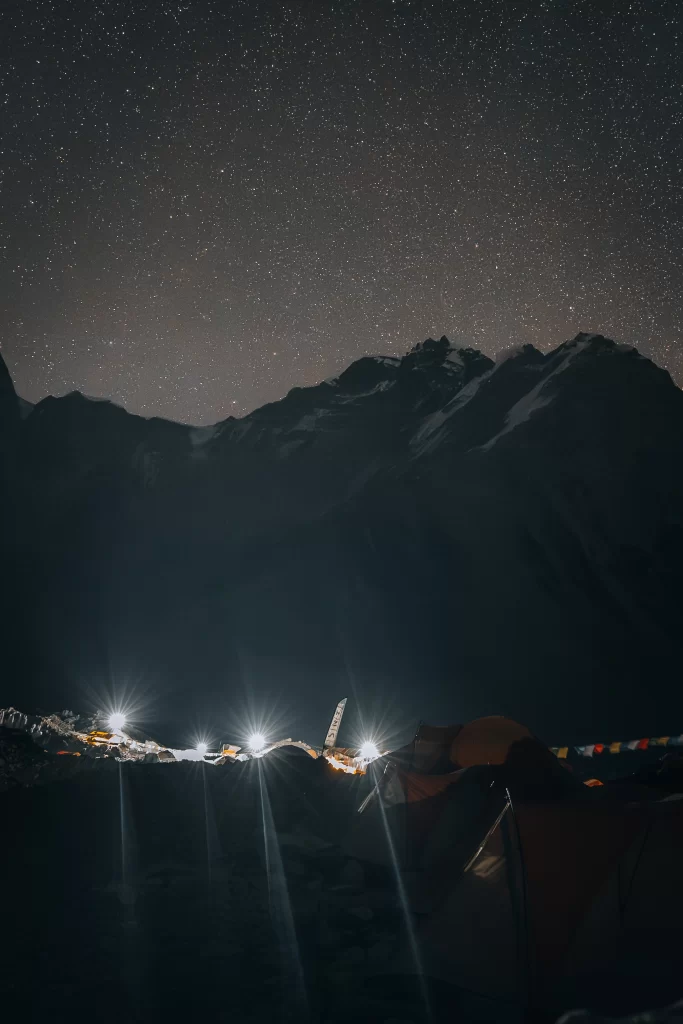
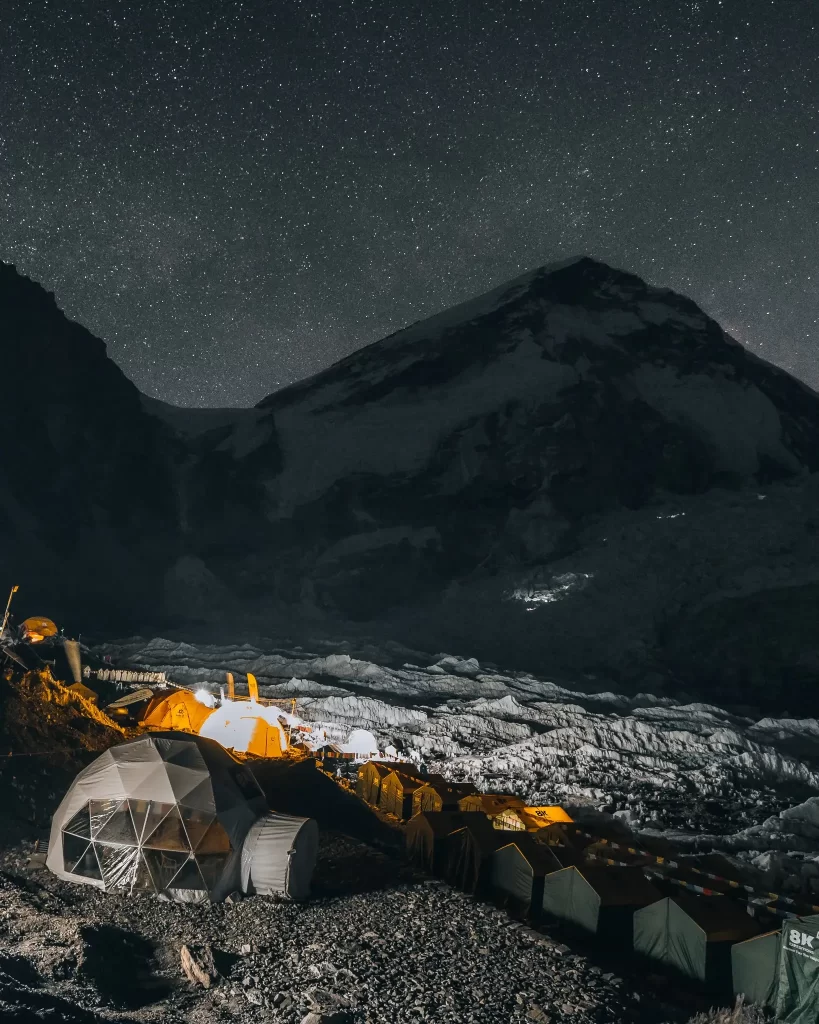
Morning Magic: Avalanches and Solo Moments
Morning at EBC requires patience and a hearty dose of wonder. Nestled among giants, I stood outside alone in the cold, silent air, waiting for the sun to make its grand entrance over the peaks. The chill was biting, but the anticipation warmed my spirit. Suddenly—WHOOSH! A massive avalanche cascaded down a distant slope right before my eyes! It was both exhilarating and humbling.
A sleepy porter shuffled by, barely glancing at the spectacle. Apparently, this is just another morning here. Me? I was wide-eyed and grinning, feeling like I should be narrating my own Nat Geo documentary!
As the sun finally spilled over the mountaintops, everything glittered. The warmth touched my face, and in that moment, every ounce of cold and fatigue melted away. Pure magic.
Daytime Buzz: Helicopters and High-Altitude Realities
Throughout the day, helicopters buzzed overhead like bees in a garden. They were either delivering much-needed supplies or whisking away trekkers who suddenly realized that thin air wasn’t quite their cup of tea. It added to the excitement—though I was more than happy to keep my boots firmly planted on solid ground!
An Unforgettable Surprise: Exploring the Khumbu Icefall
Just when I thought the day couldn’t get any better, we were surprised with a mini tour to the edge of the Khumbu Icefall. We didn’t venture onto it (no thanks, I’m not ready to audition for “Icefall Climbers Gone Wild”), but getting up close was incredible.
Standing near those towering ice formations, I felt like an extra in “Frozen 3: Himalayan Adventure.” Except this was real life, and seeing it up close gave me a profound respect for the climbers who dare to cross it.
Essential Information for Trekkers
Best Time to Visit:
- Spring (March to May): Popular for expeditions aiming for the summit. The weather is relatively stable, and the rhododendron forests are in bloom.
- Autumn (September to November): Clear skies, stunning views, but more crowds.
Preparation and Gear:
- Physical Fitness: Get used to climbing stairs. Lots of them.
- Guides and Porters: Hire a reputable trekking company like 8K Expeditions—they make all the difference.
- Packing List:
- Sturdy hiking boots
- Warm layers (trust me, you’ll need them)
- Sunscreen and sunglasses (you’ll roast in the sun)
- Snacks for energy (yes, chocolate counts)
Cultural Considerations:
- Respect local customs and the environment. Take only pictures, leave only footprints—and cough drops.
Why Sleeping at Everest Base Camp Makes All the Difference
If I had trekked to Everest Base Camp and immediately turned around, I would have missed the magic. Sleeping here, hearing the ice crack, watching climbers prep for their summit bids—it made the experience so much more meaningful. It’s not just a place you visit; it’s a place you feel.
Tips for Future Trekkers
- Train Before You Go: Netflix marathons don’t count.
- Pack Light but Smart: Do you really need that extra sweater? Probably not.
- Stay Hydrated: At altitude, water is life. And you’ll get to know every bathroom on the trail.
- Embrace the Unexpected: Laugh at the mishaps—those make the best stories.
Final Thoughts
If you’re debating whether to trek to Everest Base Camp, stop debating and start packing! It’s challenging, exhausting, and absolutely worth every cough and gasp for air. The adventure, the scenery, and the memories? They’ll last a lifetime.
A special thank you to Alina for organizing this incredible expedition and bringing together such a wonderful group of adventurers. Be sure to check out her Instagram (@alina_sorana) to see what other amazing adventures she has in store. I also want to express my gratitude to 8k Expeditions for their professionalism and expertise, handling every challenge with remarkable care and precision.
















